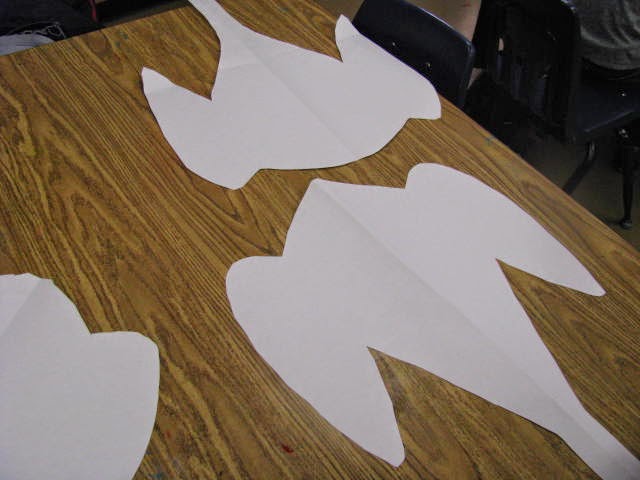I've had many student teachers over the years, and this lesson is from one of them (her name was Amy, but I'm drawing a total blank on her last name, which probably isn't important since she was getting married shortly after student teaching). A particular university near where I live and work has a masters program for adults wanting to go into teaching when they have a bachelor's degree in another field. Interested people get a master's degree and teaching certification in one swoop, which sounds fabulous, and on some levels it seems to work well. Here's my beef with it: students in this program are never taught how to make lesson plans. When I've had student teachers from this program and ask to see their plans, they show me something they got off the internet or tell me a broad idea. Now, don't get me wrong, we all get great stuff off the internet (or you wouldn't be looking at blogs for ideas!) but lesson planning is IMPORTANT. Especially starting out, I'd go so far as to call it vital. The first time it happened I couldn't really believe a college teaching program anywhere wouldn't be teaching lesson planning, but after some investigation, yep, it's true. Not a great service to pre-service teachers, so I asked Amy to come up with a lesson on her own around the theme of Vietnamese art. She did a great job, and I've used her lesson and powerpoint several times.
It's a quick and easy powerpoint about traditional Vietnamese woodcuts, and the assignment is that students create a drawing based on one of the traditional themes, such as Good Luck Wishes (a hen with chicks or pig with piglets):
Folk stories (frog in the form of a scholar):
Mythical and historical figures (we don't know Vietnamese history well in the midwest of the U.S., so I just let them make this up):
Social activities like picking coconuts or wrestling, or the spirit (12 signs of the Chinese Zodiac).
I love sixth graders sense of humor, because some were just a crack up!
In traditional Vietnamese paintings, natural materials were used to make the inks, pigments and paint; things like bamboo and tree sap. To get the whole making-our-own-paint experience, students mixed milk paint out of equal parts powdered milk and water then added powdered tempera. Each table mixed a color or two, and it was stored in containers with tight-fitting lids (old cottage cheese containers work well). One student at the end of each class had the job of taking our box of paint-filled containers to the cafeteria each time to be refrigerated. Let me tell you, this paint stinks. Like, don't-even-think-of-doing-this-lesson-if-you're-pregnant (or any of your nearby co-workers are). It's SO very stinky, but dries with this nice glossy finish that's impossible to photograph. A little bonus, it smells so awful that the students keep their lips tightly sealed while painting so they can't smell it as much (less talking and noise for the teacher!). Unfortunately, the art teacher doesn't get to leave for recess at the end of class like the sixth graders. A little fresh air after breathing in rancid-smelling milk paint would be a wonderful thing!



















































